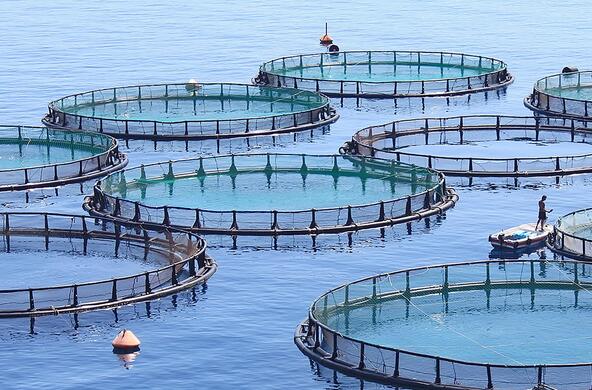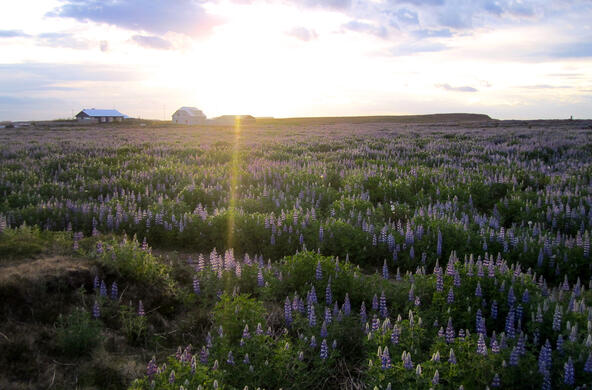A new study, published this week in Proceedings of the National Academy of Sciences, reveals that nitrogen-fixing trees play an underrecognized role in recovering tropical forests by enriching nutrient-poor soils with scarce elements such as phosphorus and molybdenum.
Coauthor Sarah Batterman, a tropical forest ecologist at Cary Institute of Ecosystem Studies, explains, “We’ve long known that nitrogen-fixing trees work with soil microbes to make atmospheric nitrogen available to plants. Our study found that nitrogen fixers also play a vital role in unlocking other nutrients by weathering rocks beneath their roots. These nutrients include things like phosphorus, which is very limited in tropical forest soils and important to plant growth.”
In this study, the team compared the soils of nitrogen-fixing and non-fixing trees across young recovering tropical forest plots that are part of the Agua Salud Secondary Forest Dynamics Network in the Panama Canal Area. They measured soil pH and mineral weathering – a process that releases nutrients trapped in rocks. They also assessed the composition of the soil microbial community.

To measure weathering, they buried 504 mesh bags of rocks (crushed dunite) under trees, and measured nutrient weathering from the rocks over eight months. Dunite was chosen because it weathers at a rate directly proportional to that of clay minerals in local soils. Trees sampled included five species of nitrogen fixers (51 trees), five species of non-fixers situated in a legume-rich area (39 trees), and five species of non-fixers situated far from any legumes (36 trees).
Batterman explains, “Mineral weathering under nitrogen fixers happened twice as fast as weathering under non-fixers. The soil under nitrogen fixers was far more acidic than the soil under non-fixers. This increased acidity promotes weathering and the release of chemical elements locked in minerals as they break down.”
The team also discovered that soils beneath nitrogen fixers were teeming with a bacterial genus new to science (Candidatus Acidoferrum) that thrives in the acidic conditions created by nitrogen-fixing trees. These bacteria are highly enriched under nitrogen fixers, where they enable phosphorus release by breaking down iron-bearing minerals.
Two important products of weathering include available phosphorus and molybdenum. Phosphorus boosts plant growth, and molybdenum helps plants assimilate nitrogen. Before weathering, these scarce but critical elements are trapped in the aluminum and iron found in Panamanian soils. The acidic conditions found beneath the roots of nitrogen fixers catalyze the weathering needed to release phosphorus and molybdenum in bioavailable forms that plants can use.

Co-author Kristin Saltonstall of Smithsonian Tropical Research Institute explains, “Together, acidic soil conditions and a distinct community of bacteria enhance nitrogen fixers’ ability to weather rocks and access nutrients. Benefits aren’t limited to fixers themselves. We also found that nitrogen fixers help fertilize other plants throughout the forest, with broad effects on nutrient cycling in the forest community.”
Lead author Dimitar Epihov of the University of Sheffield points out, “Tree diversity has long been recognized as vital for successful forest recovery. Current views dictate that nitrogen-fixing trees supply nitrogen to help speed up the recovery process. Our work expands these views by revealing that these trees also modulate the microbiome of soils belowground, enabling the release of other non-nitrogen nutrients from rocks. Benefits can be passed on to neighboring trees, and aid in the productivity of regrowing forests in the tropics.”
Batterman notes, “Nitrogen-fixing trees have presented ecologists with a longstanding paradox. They are abundant in tropical forests, but so is nitrogen in the soil. Why are they so common, if access to nitrogen does not typically limit growth? Our findings offer an answer to this puzzle. Regardless of whether they are actively fixing, nitrogen fixers also have a unique ability to unlock phosphorus, which is very limited.”
Tropical forests are responsible for 70% of the global forest carbon sink, yet they are under threat due to mining, logging, agriculture, development, and climate change. Understanding how different tree species influence tropical forests is essential to informing science-based reforestation strategies.
Batterman concludes, “Tropical soils tend to be nutrient-poor, which can slow forest recovery. Including nitrogen-fixing species in reforestation projects could help neighboring trees obtain more nutrients, grow quicker, and ultimately help protect the tropical carbon sink.”
Citation
Epihov, Dimitar Z., Kristin Saltonstall, Sarah A. Batterman, Lars O. Hedin, Jefferson S. Hall, Michiel van Breugel, Jonathan R. Leake, and David J. Beerling. 2021. "Legume–Microbiome Interactions Unlock Mineral Nutrients In Regrowing Tropical Forests". Proceedings Of The National Academy Of Sciences 118 (11): e2022241118. doi:10.1073/pnas.2022241118.
Investigators
- Dimitar Z. Epihov – Department of Animal and Plant Sciences, University of Sheffield; Leverhulme Centre for Climate Change Mitigation, University of Sheffield
- Kristin Saltonstall – Smithsonian Tropical Research Institute, Balboa, Ancón, Panamá
- Sarah A. Batterman – Smithsonian Tropical Research Institute, Balboa, Ancón, Panamá; School of Geography and Priestley International Centre for Climate, University of Leeds; Cary Institute of Ecosystem Studies
- Lars O. Hedin – Department of Ecology and Evolutionary Biology, Princeton University
- Jefferson S. Hall – ForestGEO, Smithsonian Tropical Research Institute, Balboa, Ancón, Panamá
- Michiel van Breugel – ForestGEO, Smithsonian Tropical Research Institute, Balboa, Ancón, Panamá; Yale-NUS College, Singapore; Department of Biological Sciences, National University of Singapore
- Jonathan R. Leake – Department of Animal and Plant Sciences, University of Sheffield; Leverhulme Centre for Climate Change Mitigation, University of Sheffield
- David J. Beerling – Department of Animal and Plant Sciences, University of Sheffield; Leverhulme Centre for Climate Change Mitigation, University of Sheffield
Acknowledgements
Funding for this research was made possible in part by the Leverhulme Research Centre, the Princeton University Carbon Mitigation Initiative, the Natural Environment Research Council, the British Council, the Leverhulme Trust, and the European Research Council.
This work is a contribution of the Agua Salud Project, a collaboration between the Smithsonian Tropical Research Institute, the Panama Canal Authority, and the Ministry of the Environment of Panama. The Agua Salud Secondary Forest Dynamics network is supported by HSBC, Stanley Motta, Small World Institute Fund, the Hoch family, and the National Science Foundation. Agua Salud is part of the Smithsonian Institution Forest Global Earth Observatory.
Cary Institute of Ecosystem Studies is an independent nonprofit center for environmental research. Since 1983, our scientists have been investigating the complex interactions that govern the natural world and the impacts of climate change on these systems. Our findings lead to more effective management and policy actions and increased environmental literacy. Staff are global experts in the ecology of: cities, disease, forests, and freshwater.






